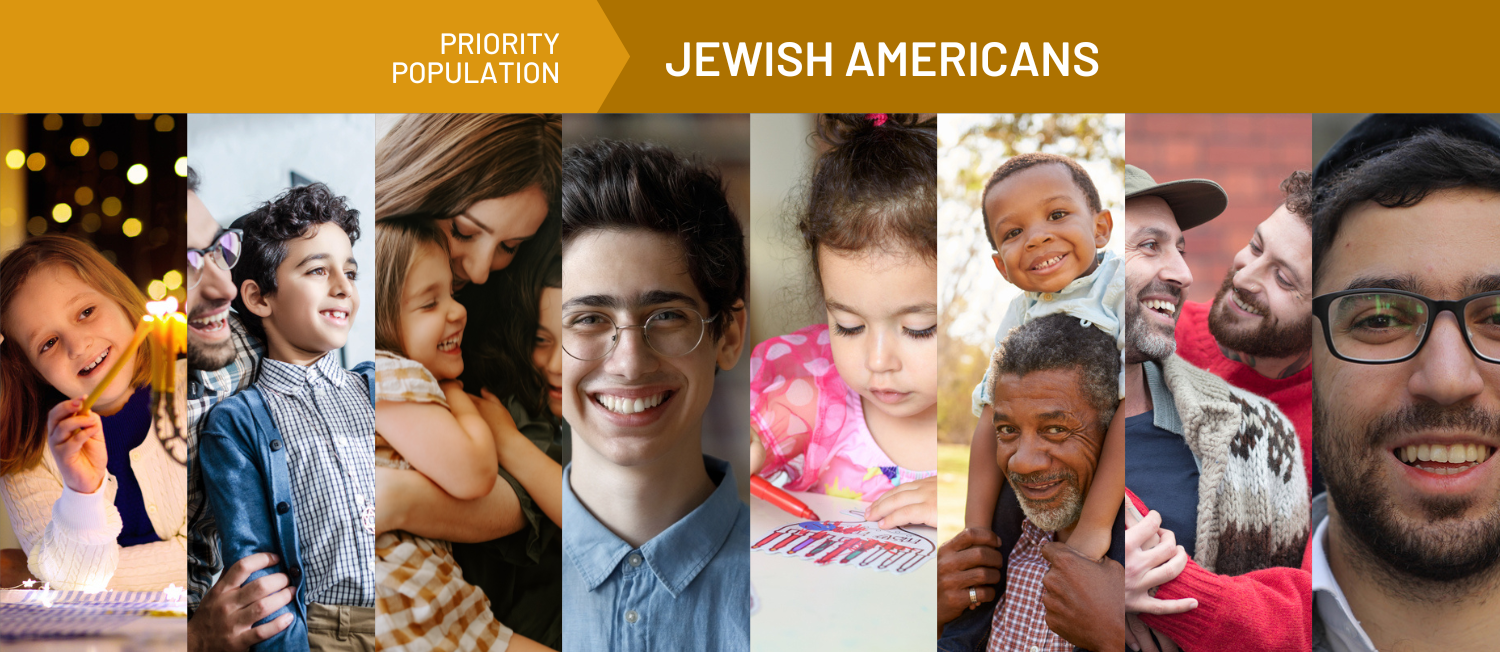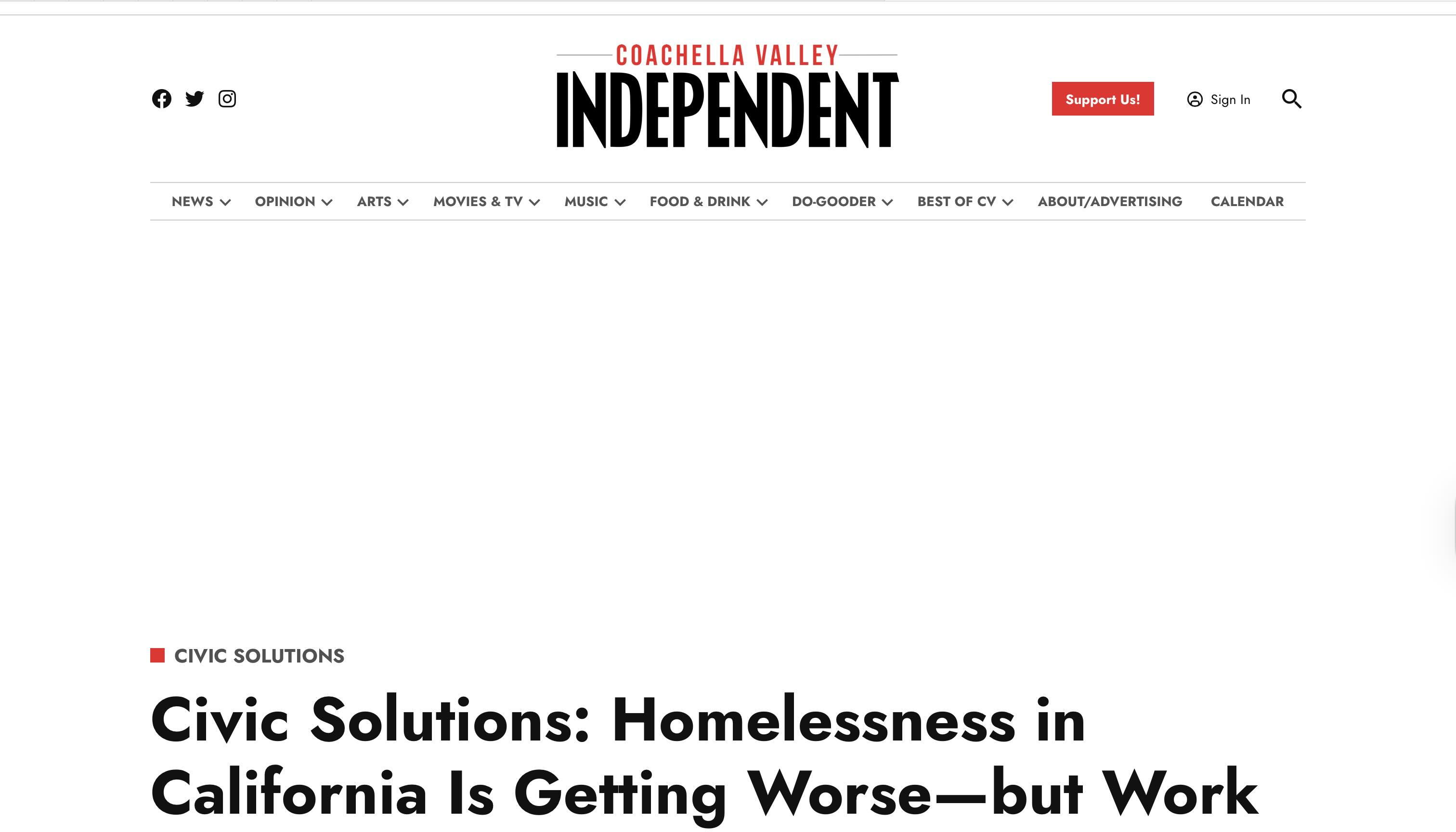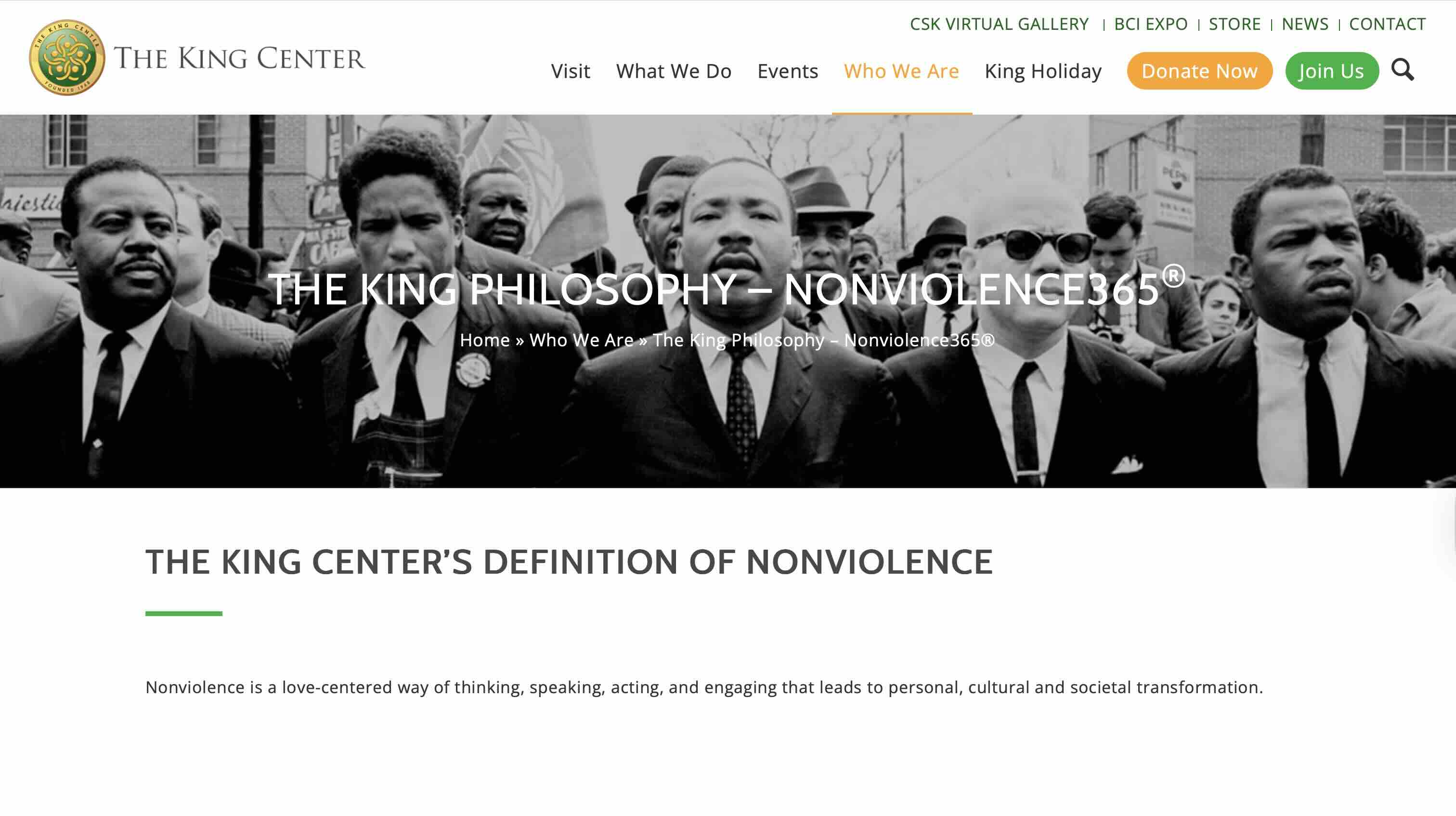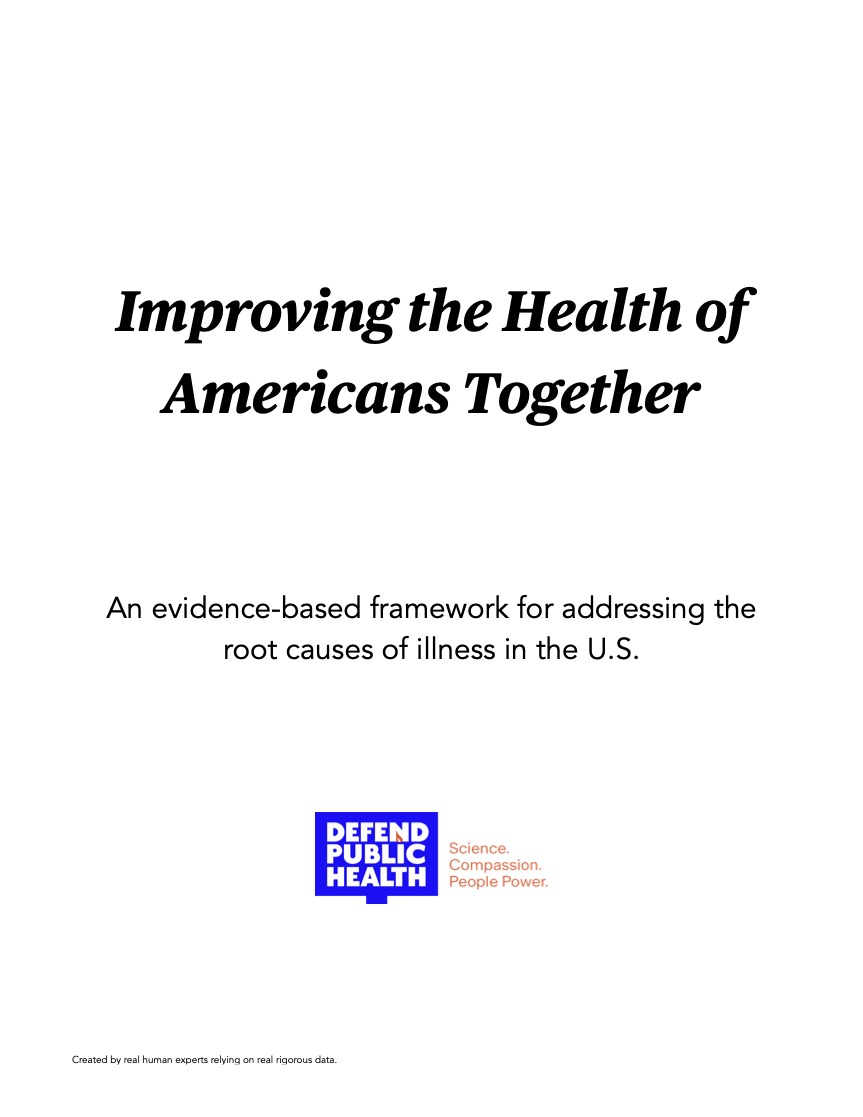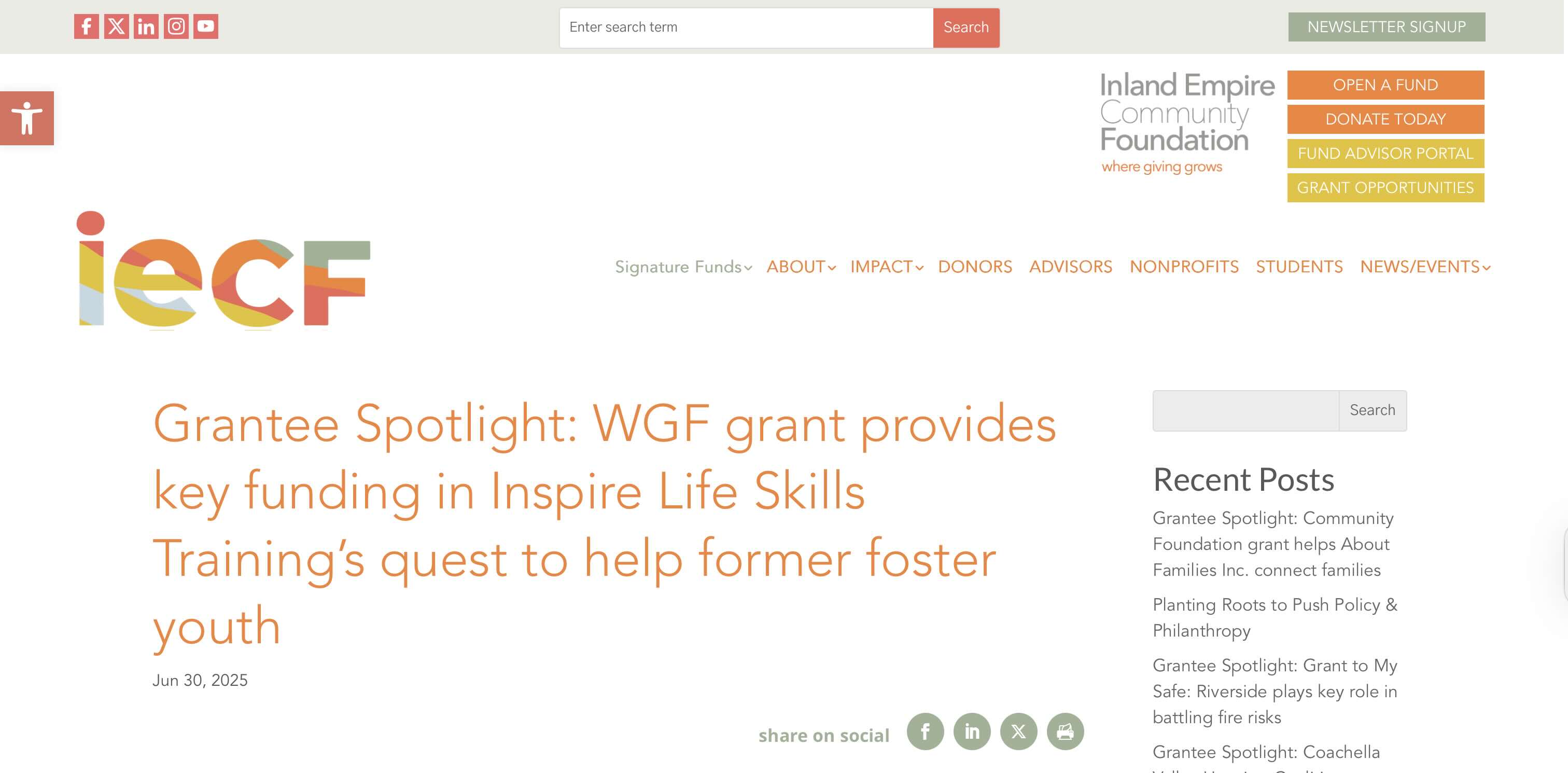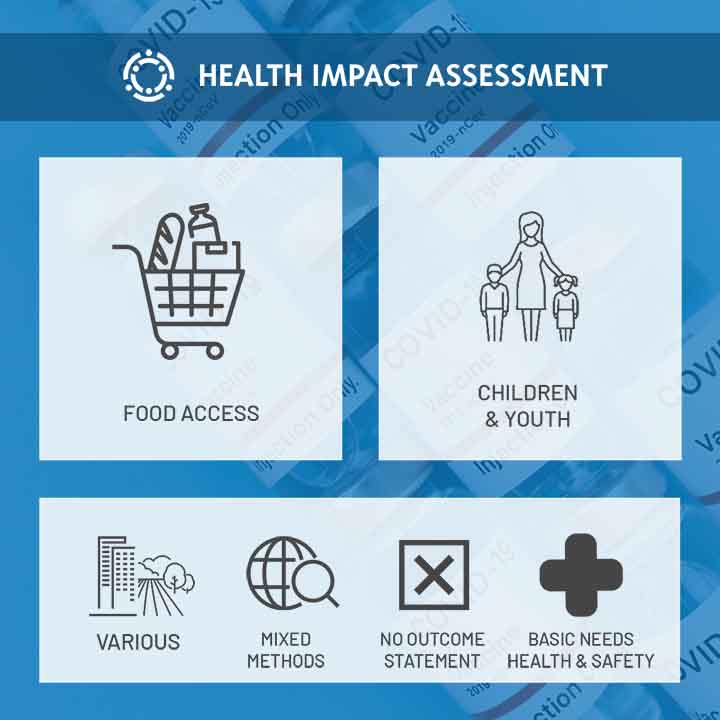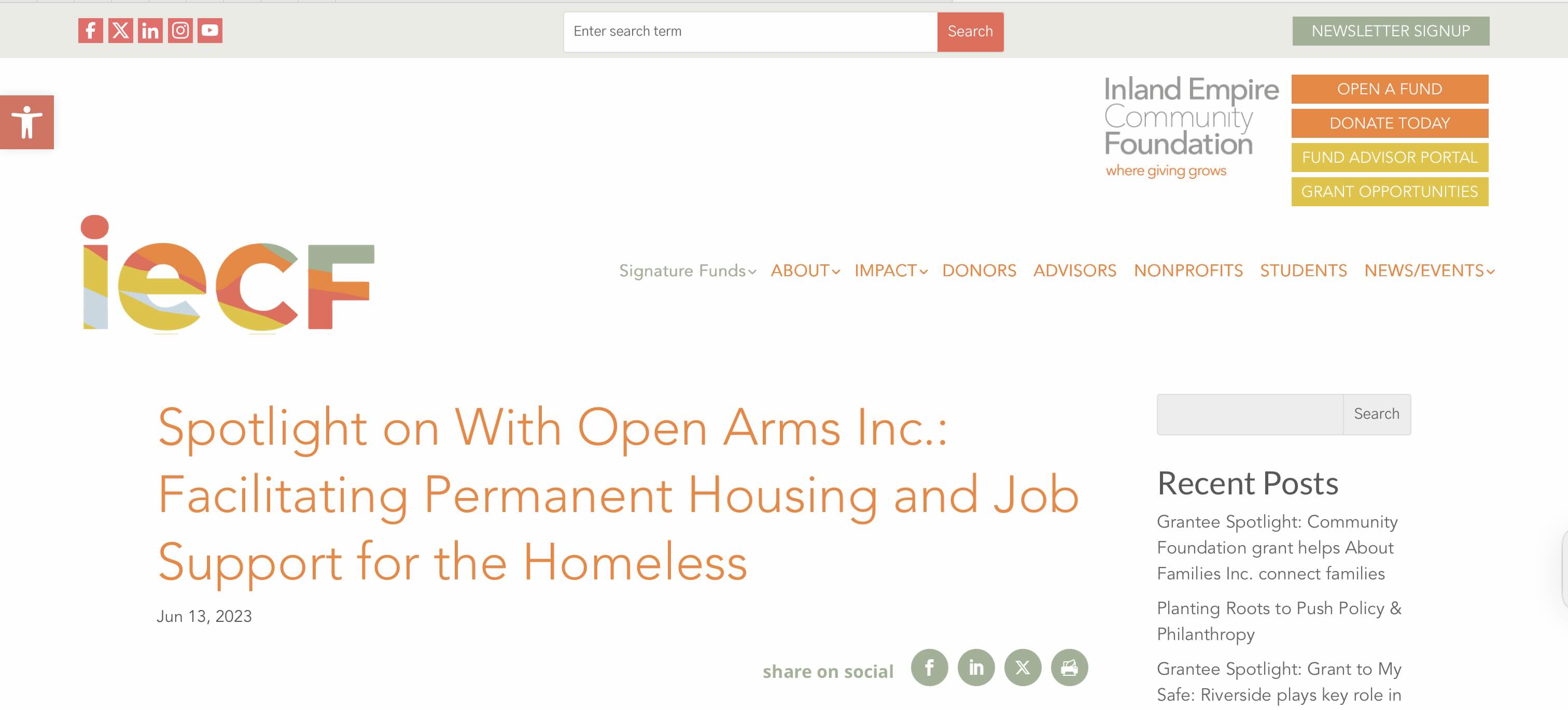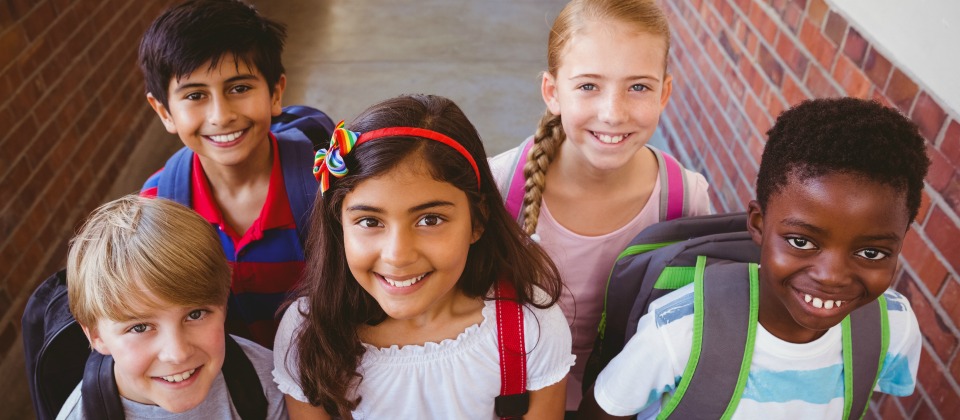People Living in Poverty
Personal, family, and community wealth provides the means for healthy, secure lives. That includes good-paying, fulfilling jobs and careers and financial security that extends across the lifespan. In 2020, more than 37.2 million people lived in economic poverty, or 11.4% of the total population. Economic poverty is a pervasive problem affecting health by limiting access to proper nutrition and healthy foods, education opportunities, safe neighborhoods, and even clean air and water, among other elements vital to well-being. Poverty has increased, with more than 3.3 million people becoming economically poor in 2019, contributing to a national rise from 10.5%—the official first increase in poverty after five consecutive annual declines. Poverty and low-income status in the U.S. are associated with various adverse health outcomes, including higher infant mortality, shorter life expectancy, and higher death rates among adults. Poverty costs the economy; experts argue that child poverty in the U.S. costs more than $500 billion annually in higher criminal expenditures, increased healthcare costs, and lost productivity. People living in poverty also have limited access to healthcare services when they need them most.
Economic poverty is propelled by inflation, poor education, income inequality, and incarceration rates. In the 1950s, more than 22% of Americans were in economic poverty. This rate declined by the 1970s, reaching a low of 11.1%; however, it rose in 1983, 1993, and 2011, up to nearly 15%. The highest number of people living in poverty in the U.S. ever recorded was in 2014, with 46.7 million people living in economic poverty. Additionally, “deep poverty”—living in a household with a total cash income below 50 percent of its poverty threshold—has become a significant chronic condition that persists over generations. In 2016, more than 18 million people lived in deep economic poverty, causing persistent challenges related to education, development, and healthcare access. With the impact of the COVID-19 pandemic pending, currently, the level of economic poverty has peeked to 17.3 in August 2020. BIPOC and people with physical or mental disabilities are more likely to experience poverty, and people in poverty are also more likely to experience discrimination, stigmatization, and abuse. Economic poverty is still a significant issue following increasing inflation, unemployment, income inequality, and poor education. Physically challenged individuals living in poverty, immigrants, homeless individuals, indigenous, black and brown folks, and LGBTQ+ folks suffer a higher impact of poverty due to compound marginalization.
Many factors contribute to poverty in the U.S., including inadequate employment opportunities among young adults, weather/climate change, and increased social injustices like racism and gender discrimination, inadequate government support, lack of access to high-quality healthcare, and high cost of living. Reducing poverty in the U.S. will require increased worker power to rebalance the labor market and boost economic mobility and individual well-being. The U.S. has made significant strides in poverty reduction since the 1960s, facilitated by decades of substantial investments in social security, nutrition assistance, unemployment reduction, low-income tax credits, and anti-poverty programs. Today, we face new challenges as a Nation. Stakeholders should consider policies that increase the minimum wage, create good-paying employment and job-training opportunities, increase child and earned income tax credits, increase access to affordable housing, childcare, and healthcare, and reform the criminal justice system to support successful reentry.
Resources & Tools
Student Academic Performance Is Affected by Issues Inside and Outside School
Resource
Brought to you by Health Impact Project
Georgia Qualified Allocation Plan for Low-Income Housing Tax Credits
Resource - Assessment
Brought to you by Georgia Health Policy Center
Kitsap County Transportation Improvement Program Project
Resource - Assessment
Brought to you by Health Impact Project
Davidson Walks and Rolls: Active Transportation Master Plan
Resource - Assessment
Brought to you by Health Impact Project
Published on 12/31/2012
California Assembly Bill 346: Joint Use Projects and Eligibility for State Assistance
Resource - Assessment
Brought to you by Health Impact Project
Published on 04/30/2009
Comprehensive Cluster Residential Ordinance-Milford, New Hampshire
Resource - Assessment
Brought to you by Health Impact Project
Published on 05/31/2014
Alcohol Retail Outlet Density Policy in Utah
Resource - Assessment
Brought to you by Health Impact Project
Downtown-Westside Baltimore
Resource - Assessment
Brought to you by Health Impact Project
Published on 05/31/2013
The Supplemental Poverty Measure: 2018
Resource - Fact Sheet
Brought to you by Census Bureau
Published on 10/01/2019
Tice Community Connectivity and Redevelopment
Resource - Assessment
Brought to you by Health Impact Project
Published on 05/31/2015
Retail Cannabis Regulation in Los Angeles County
Resource - Assessment
Brought to you by Health Impact Project
Published on 07/14/2019
City of Sheridan Comprehensive Plan Update
Resource - Assessment
Brought to you by Health Impact Project
Published on 05/31/2015
Hawai'i County Agriculture Development Plan
Resource - Assessment
Brought to you by Health Impact Project
Healthy Places Index Policy Guide - Low-Income Renter Severe Housing Cost Burden
Resource - Policy Brief
Mid-South Regional Greenprint and Sustainability Plan
Resource - Assessment
Brought to you by Health Impact Project
Published on 05/31/2014
Kansas Corporate Farming Law
Resource - Assessment
Brought to you by Health Impact Project
Published on 02/28/2015
Power Generation Alternatives for the Michoud Natural Gas Plants
Resource - Assessment
Brought to you by Health Impact Project
Published on 08/31/2016
Legalizing Medical Marijuana Through the Utah Medical Cannabis Act
Resource - Assessment
Brought to you by Health Impact Project
Published on 11/30/2017
Ohio Housing Inspections
Resource - Assessment
Brought to you by Health Impact Project
Published on 04/30/2014
Caño Martin Peña
Resource - Assessment
Brought to you by Health Impact Project
Published on 12/31/2013
California Domestic Worker Equality, Fairness and Dignity Act
Resource - Assessment
Brought to you by Health Impact Project
Increasing Warm Handoffs: Optimizing Community Based Referrals in Primary Care Using QI Methodology
Resource - Journal Article
Brought to you by NLM
Robbinsville Pedestrian Connectivity Plan
Resource - Assessment
Brought to you by Health Impact Project
Eugene-Springfield Consolidated Plan and the Impact of Housing on Children's Health
Resource - Assessment
Brought to you by Health Impact Project
Published on 07/31/2014
Massachusetts Small Business Technical Assistance Program
Resource - Assessment
Brought to you by Health Impact Project
Published on 01/31/2016
Restorative Justice in San Diego
Resource - Assessment
Brought to you by Health Impact Project
Published on 09/30/2016
Improving Philadelphia's Rental Regulatory and Housing Support Systems
Resource - Assessment
Brought to you by Health Impact Project
Published on 09/06/2022
Maricopa County Sodium and Nutrition Standards Procurement Policy
Resource - Assessment
Brought to you by Health Impact Project
Published on 05/31/2012
Marin Housing Code Enforcement Policies
Resource - Assessment
Brought to you by Health Impact Project
Published on 12/31/2011
Boston Living Wage Ordinance
Resource - Assessment
Brought to you by Health Impact Project
Published on 05/02/2016
Sunnydale Public Housing Redevelopment
Resource - Assessment
Brought to you by Health Impact Project
Chart Book: Housing and Health Problems are Intertwined. So are Their Solutions.
Resource
Brought to you by Center on Budget and Policy Priorities
The Development and History of the Poverty Thresholds
Resource
Brought to you by U.S. Department of Health and Human Services
Urban Forest Canopy as a Climate/Health Adaptation
Resource - Assessment
Brought to you by Health Impact Project
The Long Road Home: Decreasing Barriers to Public Housing for People With Criminal Records
Resource - Assessment
Brought to you by Ella Baker Center for Human Rights
Lawrence Green Streets Program
Resource - Assessment
Brought to you by Health Impact Project
Published on 03/01/2017
Coffelt-Lamoreaux Public Housing Redevelopment
Resource - Assessment
Brought to you by Health Impact Project
Published on 10/31/2013
Georgia Qualified Allocation Plan for Low-Income Housing Tax Credits
Resource - Assessment
Brought to you by Health Impact Project
Published on 08/31/2015
North Birmingham Community Framework Plan
Resource - Assessment
Brought to you by School of City and Regional Planning at the Georgia Institute of Technology
Fitchburg Vacant Lots
Resource - Assessment
Brought to you by Health Impact Project
Published on 12/31/2012
Healthy Places Index Policy Guide - Low-Income Homeowner Severe Housing Cost Burden
Resource - Policy Brief
Long Beach Downtown Plan
Resource - Assessment
Brought to you by Health Impact Project
Published on 04/01/2011
South Lincoln Homes
Resource - Assessment
Brought to you by Health Impact Project
Published on 12/31/2008
Bullhead City Rotary Park Rapid
Resource - Assessment
Brought to you by Health Impact Project
Published on 10/02/2014
College Park/University of Maryland Metro and MARC Station TDDP/TDOZ
Resource - Assessment
Brought to you by Health Impact Project
Aberdeen Pedestrian Transportation Plan
Resource - Assessment
Brought to you by Health Impact Project
Published on 11/30/2011
Project HEAL (Health.Equity.Art.Learning)
Resource - Assessment
Brought to you by Health Impact Project
Published on 12/31/2016
Curry County Housing Stock Upgrade Initiative Pilot
Resource - Assessment
Brought to you by Health Impact Project
Published on 07/31/2013
Eastern Neighborhoods Community Plans
Resource - Assessment
Brought to you by Health Impact Project
Published on 12/31/2006
Michigan Street Corridor Plan: A Health Impact Assessment
Resource - Assessment
Brought to you by City of Grand Rapids
Cargo Atlanta Citywide Freight Study
Resource - Assessment
Brought to you by Center for Quality Growth and Regional Development
Globeville and Elyria Swansea Neighborhood Plan HIA
Resource - Assessment
Brought to you by Health Impact Project
Published on 01/01/2014
Shared-Use Roosevelt-School Properties as Community Space
Resource - Assessment
Brought to you by Health Impact Project
Published on 11/30/2015
Demolition of a Lead Painted Bridge Adjacent to a Residential Area
Resource - Assessment
Brought to you by Health Impact Project
South Thornton Revitalization Subarea Plan
Resource - Assessment
Brought to you by Health Impact Project
Quequechan River Rail Trail Phase 2
Resource - Assessment
Brought to you by Metropolitan Area Planning Council
North Birmingham Community Framework Plan
Resource - Assessment
Brought to you by Health Impact Project
Published on 12/31/2013
The Effects of Wild Rice Water Quality Rule Changes on Tribal Health
Resource - Assessment
Brought to you by Health Impact Project
Published on 09/30/2018
California High-Speed Rail: San Jose to Merced Corridor
Resource - Assessment
Brought to you by Health Impact Project
Published on 05/02/2011
Fresh Foods Market in Central City New Orleans
Resource - Assessment
Brought to you by Health Impact Project
Published on 02/28/2015
Oregon Farm-to-School Legislation
Resource - Assessment
Brought to you by Health Impact Project
Published on 04/30/2011
Long Beach Housing Element
Resource - Assessment
Brought to you by Health Impact Project
Published on 08/01/2013
Restorative Justice Policies in Merced County Schools
Resource - Assessment
Brought to you by Health Impact Project
The Crossings at 29th and San Pedro St. - South Central Redevelopment
Resource - Assessment
Brought to you by Health Impact Project
Published on 12/31/2008
Colorado SB 18-024: Expanding Access to Behavioral Health Care Providers
Resource - Report
Brought to you by Health Impact Project
Massachusetts Paid Sick Days
Resource - Assessment
Brought to you by Health Impact Project
Published on 09/30/2009
Lake Merritt BART Station Specific Plan
Resource - Assessment
Brought to you by Health Impact Project
Central Corridor Area Plan
Resource - Assessment
Brought to you by Health Impact Project
Published on 12/31/2011
Hoboken Stormwater Management Plan and Ordinance
Resource - Assessment
Brought to you by Health Impact Project
Published on 09/18/2016
Atlanta Regional Plan 2040
Resource - Assessment
Brought to you by Georgia Institute of Technology School of Architecture
Taking the Heat Off Marginalized Communities: Disparities in Extreme Heat
Resource - Blog
Brought to you by Southern California Grantmakers
School Level Needs Assessment Regulations Under the Every Student Succeeds Act
Resource - Assessment
Brought to you by Health Impact Project
Published on 07/31/2017
Executive Park Subarea Plan
Resource - Assessment
Brought to you by Health Impact Project
Published on 12/31/2006
Massachusetts Community Investment Tax Credit Grant Program
Resource - Assessment
Brought to you by Health Impact Project
Published on 08/31/2014
Baltimore Red Line
Resource - Assessment
Brought to you by Health Impact Project
Published on 01/02/2008
Rochester Bike Share
Resource - Assessment
Brought to you by Health Impact Project
Published on 05/31/2018
Tice Community Connectivity and Redevelopment
Resource - Assessment
Brought to you by Florida Department of Health in Lee County
SE McLoughlin Boulevard Active Transportation Road Safety Audit
Resource - Assessment
Brought to you by Health Impact Project
Published on 07/31/2014
Food Deserts in Tennessee-HIA of SB 1176
Resource - Assessment
Brought to you by Health Impact Project
An Overview of Addressing Nonresponse Bias in the American Community Survey During the COVID-19 Pandemic Using Administrative Data
Resource - Blog
Brought to you by Census Bureau
Neenah-Menasha Sewerage Commission Biosolids Storage Facility
Resource - Assessment
Brought to you by Health Impact Project
Health Note: Modify Homestead Circuit Breaker
Resource - Report
Brought to you by North Carolina Budget and Tax Center
Divine Mercy Development
Resource - Assessment
Brought to you by Health Impact Project
Published on 10/31/2011
Fort DuPont Redevelopment Project
Resource - Assessment
Brought to you by Health Impact Project
Published on 05/31/2013
Healthy Neighborhoods for a Healthy Detroit
Resource - Assessment
Brought to you by Health Impact Project
Published on 09/30/2015
Metro Westside Subway Extension (Wilshire Corridor)
Resource - Assessment
Brought to you by Health Impact Project
Published on 01/01/2012
Transitional Jobs Program
Resource - Assessment
Brought to you by Health Impact Project
Published on 12/31/2012
Community Climate Choices
Resource - Assessment
Brought to you by Oregon Health Authority Division of Public Health
District of Columbia B24-0236: Child Wealth Building Act of 2021
Resource - Report
Brought to you by Health Impact Project
Rental Assistance Demonstration Project
Resource - Assessment
Brought to you by Health Impact Project
Westerly Creek
Resource - Assessment
Brought to you by Health Impact Project
Published on 07/01/2009
California Paid Sick Days
Resource - Assessment
Brought to you by Health Impact Project
Published on 07/02/2008
Clark County Bicycle and Pedestrian Master Plan
Resource - Assessment
Brought to you by Health Impact Project
Potential Full-Service Grocery Store Development in a Food Desert
Resource - Assessment
Brought to you by Health Impact Project
Published on 05/31/2013
King Street Station Multimodal Hub
Resource - Assessment
Brought to you by Health Impact Project
Published on 04/30/2011
Kern County Regional Transportation Plan and Sustainable Communities Strategies
Resource - Assessment
Brought to you by Health Impact Project
Street Design Ordinance in Davidson, North Carolina
Resource - Assessment
Brought to you by Health Impact Project
Published on 09/30/2012
McGrath Highway Corridor Redevelopment
Resource - Assessment
Brought to you by Health Impact Project
Pay Equity Policies
Resource - Assessment
Brought to you by Health Impact Project
Published on 03/31/2011
MacArthur BART Transit Village
Resource - Assessment
Brought to you by Health Impact Project
Published on 12/31/2006
National Nutrition Standards for Snack and a la Carte Foods and Beverages
Resource - Assessment
Brought to you by Health Impact Project
Published on 05/31/2012
San Francisco Bay Area's Regional Transportation Plan
Resource - Assessment
Brought to you by Health Impact Project
Published on 04/30/2013
State Route 50 Bus Rapid Transit
Resource - Assessment
Brought to you by Winter Park Health Foundation
Overheating Buildings in Coastal Communities: Homes, Health Impacts, and Opportunities for Collaboration in San Francisco
Resource - Assessment
Brought to you by SFDPH Program on Health, Equity and Sustainability
Alcohol Outlet Density-Marathon County, Wisconsin
Resource - Assessment
Brought to you by Health Impact Project
Central Park Boulevard Commuter Rail Station-Denver
Resource - Assessment
Brought to you by Health Impact Project
Published on 12/31/2011
Milton U.S. 7 Corridor
Resource - Assessment
Brought to you by Health Impact Project
Published on 04/30/2015
California Drinking Water Project Funding
Resource - Assessment
Brought to you by Health Impact Project
Published on 11/02/2016
After-School Programs - Proposition 49
Resource - Assessment
Brought to you by Health Impact Project
Sycamore Light Rail Station
Resource - Assessment
Brought to you by Health Impact Project
Published on 04/30/2012
Dental Health Is Worse in Communities of Color
Resource - Report
Brought to you by The Pew Charitable Trusts
Transit Oriented Development Within Nashville's Northeast Corridor
Resource - Assessment
Brought to you by Health Impact Project
Humboldt County General Plan Update
Resource - Assessment
Brought to you by Health Impact Project
Published on 02/29/2008
Dental Disparities among Low-Income American Adults: A Social Work Perspective
Resource - Journal Article
Glendale Riverwalk
Resource - Assessment
Brought to you by Health Impact Project
Published on 02/29/2012
California Drinking Water Project Funding
Resource - Assessment
Brought to you by Sequoia Foundation
The Poverty Line Matters, but It Isn’t Capturing Everyone It Should
Story - Written
Brought to you by Center for American Progress
Mapping Student Achievement in Areas of Poverty
Story
-
 Original
Original
Brought to you by Community Commons
Published on 02/01/2017
Data & Metrics
Related Topics




